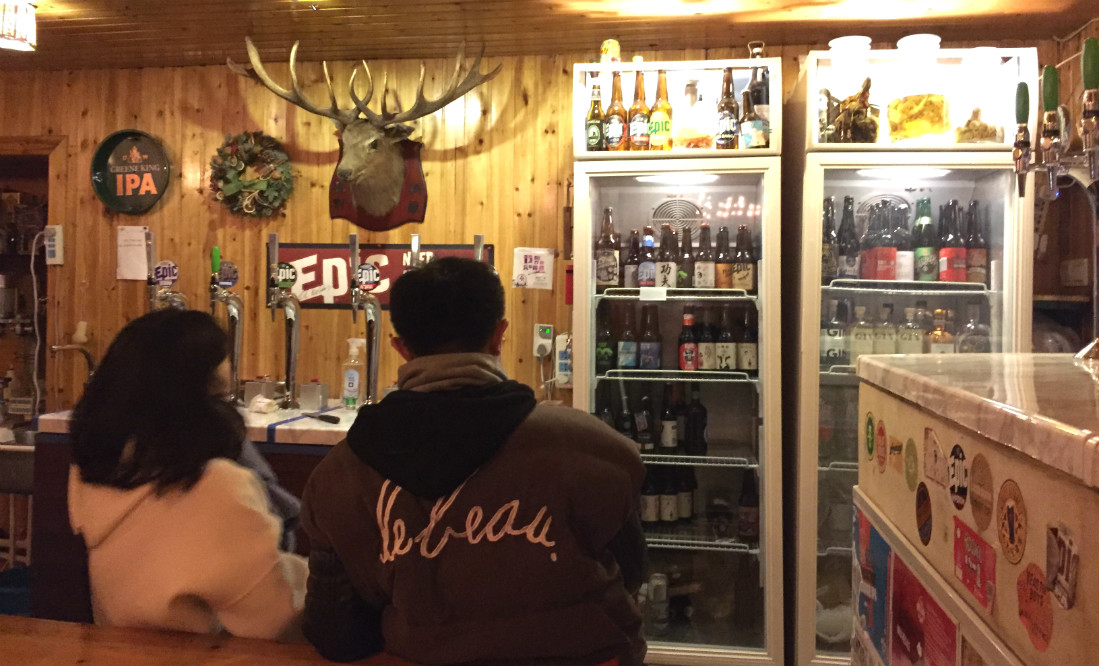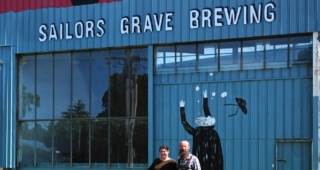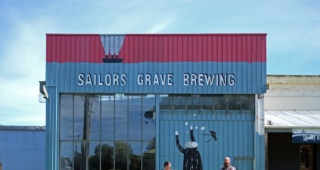“It’s about time you started learning, started learning to come to where the flavor is…” – Clutch, “Walking in the Great Shining Path of Monster Trucks”
“Hey, in China we have more than 20 cities with more than 30 million people. And here in Shanghai, I can say that I’m the best place for craft beer in a district of more than 6 million people!”
He exaggerated China’s city sizes (a little), but throughout our conversation Jackie Zhou often raises the topic of scale as it relates to China and the complexities of its beer market, so let’s color by number this story’s backdrop with a surface-scratching look at just that—scale.
Now, a string of stats and comparisons doth not traditionally make a thrilling beer story introduction, but I beg pardon in this instance. The next few paragraphs should illuminate the machinations driving the global beer industry’s infatuation with China, and put into clear context places like Jackie’s Beer Nest, a shoebox-sized beer bar run by our catalyst hero, Jackie, and his wife, Mimi, in Shanghai’s vanishing Old Town. It’s in Old Town, at least, until The Crushing Foot of Progress inevitably bulldozes the place, perhaps even by the time you read this.
First, a softball: China’s population is around 1.4 billion and counting, in part due to the relaxation in 2013 of the country’s infamous “one-child policy.” That means that more than 18% of Earth’s humans are in China, and that the country outnumbers the US population—the world’s third biggest—by more than 1 billion. In fact, you can combine the US population with people from the world’s next four most-populated countries (Indonesia, Brazil, Pakistan, Nigeria) and still come up short of China.
As of 2017, there are more than 100 Chinese cities bearing more than 1 million residents. India, which the United Nations predicts will surpass China in population by 2025, has 46 such cities; Europe has 35, Indonesia 14, Japan 13, and the US 10. There are so many massive metropolises here that cities are commonly, though informally and nebuously, slotted into four tiers. Criteria weighed for tier designation includes things like population, GDP, commercial appeal, infrastructure, politics, and personal income; in some ways, you could probably boil it down to urban desirability. For instance, Zhou tells me that Shanghai, Beijing, and Guangzhou are China’s only three true Tier 1 cities, though some believe that up to 15 more cities qualify for top billing.

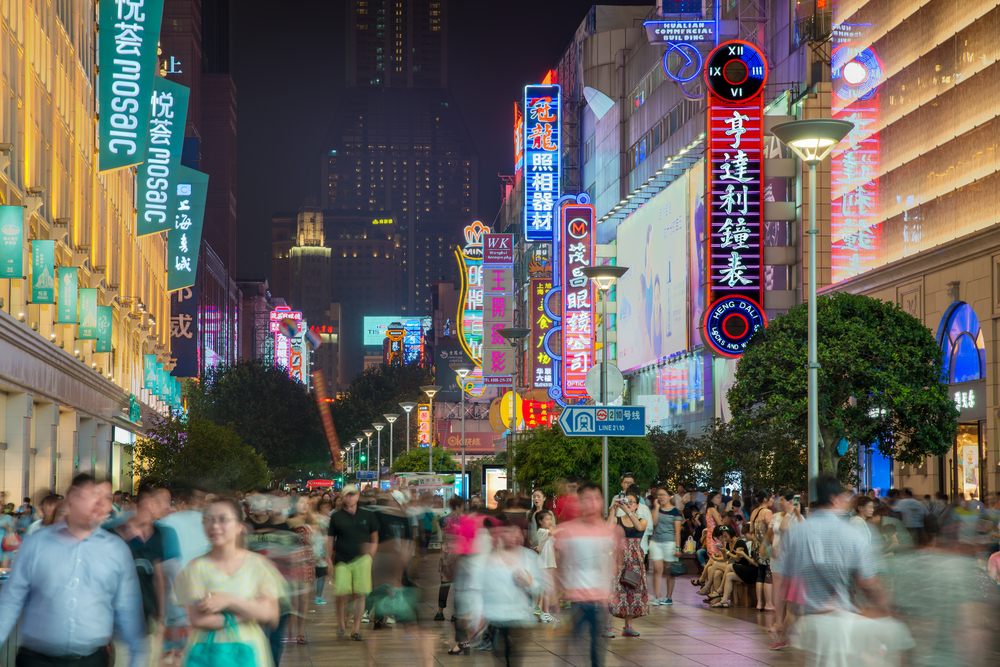
Okay, we’ve established that China has a small handful of residents. As for how much those folks spend annually on beer, try ¥550 billion (US$87 billion), according to findings Scott Cendrowski published in his excellent piece for Fortune. It is the world’s biggest beer market almost sheerly by default—China’s per-capita beer consumption barely ranks among the top-50 countries—but either way, micro and macro breweries alike value this heaping pot o’ gold like Middle-earth dwarves did Smaug’s ancient treasure in Lonely Mountain.
To wit, consider this: Though today craft beer only accounts for less than 1% of China’s ¥550 billion beer industry, that still equates to around ¥5.5 billion (US$870 million) in annual sales. In comparison, craft beer makes up around 20% of the current US beer market—if or perhaps when China’s craft beer sales hit even half that mark, I believe the word “booyah” would apply for those breweries pouring from the top of the pile.
For now the top-selling beer in China is Snow, a “lager” comparable to pissy dribble and produced by China Resources Snow Breweries, quite possibly the least sexy brewery name on the planet. Snow commands about 25% of the market, while Tsingtao Brewery comes in second by controlling roughly 18% of it. Pulling third place is old AB InBev with about 16%; in China as in Deep Alabama, cans of Bud are considered something of a premium product. It’s worth noting that “other breweries” claim up to 26% of China’s beer sales.

AB InBev is one overseas Goliath actively seizing the opportunity to worm in and control the craft beer conversation before it really heats up. Through its clandestine subsidiary ZX Ventures, the company has already exercised two major Shanghai takeovers, buying a chain of Belgian beer bars called Kaiba as well as the award-winning Boxing Cat Brewery. It’s also pushing in a major way another of its brands, Goose Island Brewery, opening a brewpub in Shanghai and essentially employing a “forcibly pour it down people’s throats and they will drink it” sales approach detailed in the aforementioned Fortune piece. AB ZX InBev will surely dangle more dollars in front of other influential Chinese craft breweries; they’re likely doing it right now.
Many beer people, including Zhou, think that craft beer will be the beer of choice for younger generations approaching or who have just reached drinking age. The problem, he says, is that deep-pocketed beer barons think that, too.
“Craft beer is for a new generation, people born after 1990—this is my customer and my future customer. You’ll never succeed if you go after Chinese people born in the 1950s and 1960s,” he explains. “A lot of young people in China have heard about craft beer, but they’ve never had a chance to know what real craft beer is. The big breweries have to protect themselves; Budweiser and all the other big beer guys don’t want people to know there’s more than what they have.”
“If You Trust the Wrong Partner, You’re Dead”
Zhou moved to Shanghai from northwest China when he was 18. Craft beer entered his life some years later when in 2006 a contact at the US Agricultural Trade Office in Shanghai—a major client of the food and beverage import company at which Zhou works—introduced him to a fellow they said dealt in something called craft beer. “They said he had many American craft beers, and I was just thinking, ‘what is craft beer?’ I only know imported beer!” (Zhou’s company was the first to import foreign beers of any kind to China.)
Zhou’s craft introduction included bottles from such US breweries as Dogfish Head Brewery, Brooklyn Brewery, Lost Coast Brewery, and Kona Brewing Co. “The first time I tried an IPA I was just like, damn, this is really good—you will never find this kind of aroma or taste from any European beer.” He turned to the US Brewers Association’s Export Development Program for more help and information, but the infant market in China just wasn’t ready.

A year later Zhou took matters into his own hands by opening in his neighborhood a tiny 12 sqm tasting room with barely enough space for one small table. Zhou stocked the place with around 60 bottles and called it Jackie’s Beer Nest. “After awhile, I realized that it was the first bottle shop in China,” he says. Local expat media sniffed the place out a few months after its debut, word spread, and a Shanghainese cult beer classic was born.
Overwhelmed by demand (and in need of a venue with its own toilet), Zhou moved in 2010 a few doors down to the current space. It’s bigger, though not by much, with a few two-top tables arranged around a picnic-style table in the middle of the wooded space. “We’re like a tea house, but you drink alcoholic beverages instead,” Zhou says. “I don’t want to be Boxing Cat.”
[Ed. Note: The Boxing Cat Brewery venues are all fairly large, super sporty, and generally play bad music, at least by our definition. We don’t want Jackie’s Beer Nest to be Boxing Cat, either. We do still pop into Boxing Cat on occasion, however, even though the venues feel a little more tired with each successive visit.]
Chinese prints, liquor bottle lights, beer artwork Mimi created—she and Jackie met at the first bar—and, of course, wooden reindeer pulling Santa in his sleigh adorn the walls and low ceiling. Near the door, on top of one of the tall fridges stocked with bottled beers and gins, are a few large illuminated glass jars filled with snake liquor, ginseng liquor, and liquor made with what I think is deer horn. They’re there, Zhou says, as reflections of China’s drinking culture. “For Chinese people, whenever they eat anything or drink anything, the first thing they think is that’s it for health,” he says. “They’re just there for show; too old to drink. I just say they’re good for lamps.”
There’s a 10-point buck head mounted above a line of six taps reserved for Epic Brewing Company, too. Zhou works closely with the Auckland-based brewery, importing and distributing their beer range across China. This is a perfect example of a somewhat random craft brewery successfully getting their foot in the door in China and reaping the rewards.
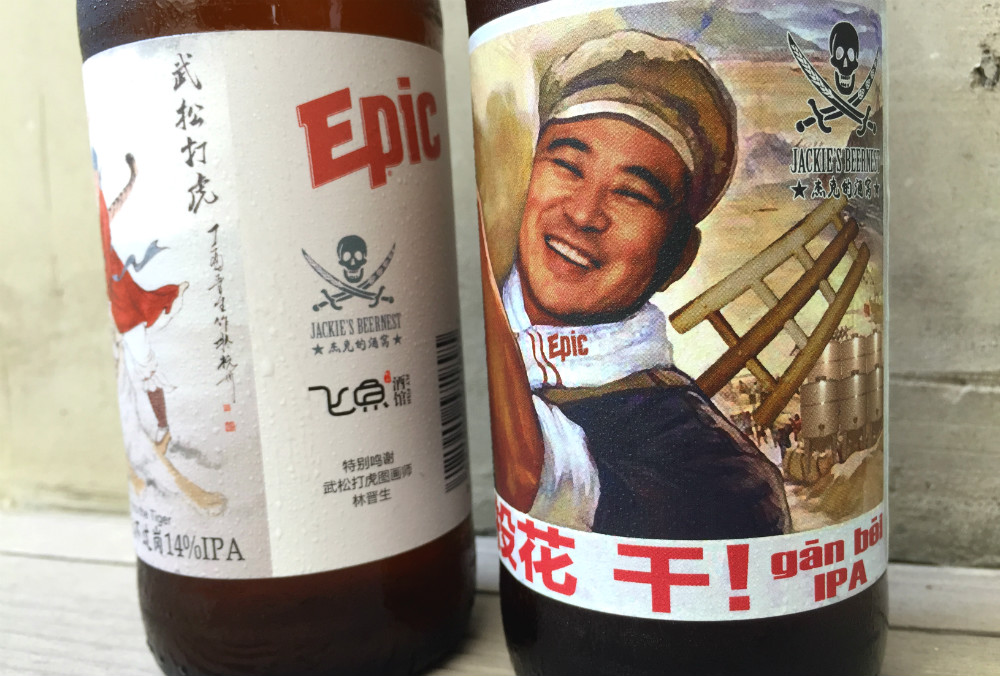
Both parties looked into one another’s background for well over a year before a mutual acquaintance from Shanghai craft brewery The BREW (one now running the Goose Island brewpub, incidentally) finally introduced them. The partnership has worked well: Epic’s Hop Zombie is China’s top-selling double IPA, and Zhou has done a number of collaboration beers with the brewery under the Jackie’s Beer Nest flag.
“You only have one chance in China—if you trust the wrong partner, you’re dead,” says Zhou.
Brewing Against the Grain
Jackie’s own beers flow from most of the bar’s other 25 or so taps. Some of them are contract brewed at UK breweries like Greene King (another brewery Zhou imports) and shipped to China, while others Zhou brews in small batches on the 40- and 200-liter brew kits he keeps in what he calls his “beer studio.” This latter lineup changes frequently, but when I’ve visited it has included a coffee tripel, imperial wheat stout, sour, cloudy IPA, nitro stout, Chinese chestnut ale, and tea ale, among many others—a proper range of beer styles, in other words. I’ve also spotted something called cheese beer, and tried a smoked salmon ale that tasted exactly as advertised.
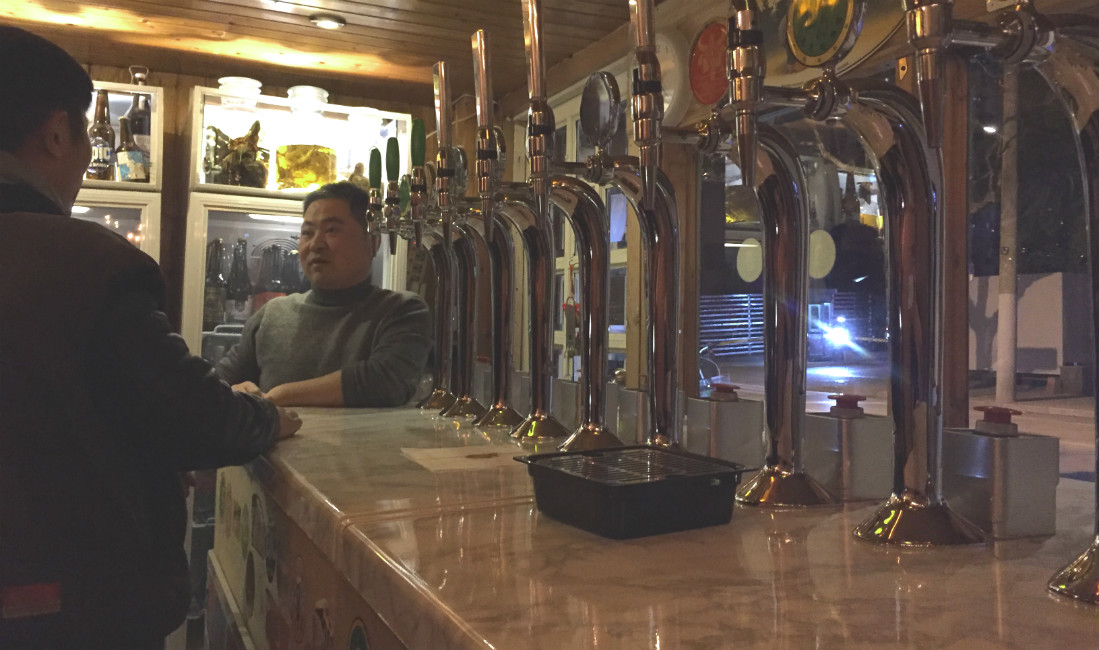
Zhou says that one of his most popular brews was a Belgian dubbel brewed with Chinese red dates, and that three barrel-aging collaborations are underway, among them a stout with Strong Ale Works in Qiangdo and a Belgian-style tripel with MB Club in Chengdu. “It’s my dream to have a brewery,” he says.
That dream has hurdles, to say the least. Zhou estimates that he’d need to raise at least ¥5 or 6 million to get started, but start-up finances aren’t the only problem. China’s brewing regulations favor the big guys, so size matters when it comes to licensing—and bottling. All bottled beers must be filtered and pasteurized (a no-no for most craft beer), and, ironically, quality stamps are only issued to beers packaged on lines handling at least 12,000 bottles per hour.
“In China, if you’re too small you’ll never get a license. That means that for me to do a brewery, I need to get a space that is a minimum 1,000 square meters,” Zhou says. “You have to be skilled, and don’t have time to learn because your competition is here, and the competition is the whole world. If you want to produce and distribute nationally, no way, you’ll never compete. If you think you’re a good brewery and another Budweiser will buy you, you’re dead. If you want to copy someone, you don’t have a chance. You can survive doing an original artisanal brewery—it’s the only way.”
Related: At Bionic Brew, That Which Does Not Kill You Makes You Stronger
Price is another barrier for aspiring brewers like Zhou, in that locally brewed craft often costs as much if not more than its imported competitors. To cite just one example, Zhou says that some 500ml bottles of decent German beers can often be had for as little as ¥7 (US$1.10). Craft brewers the world over likely experience some form of the same problem, but like John Wei from Singapore-based Brewlander once told us, it’s difficult to make beer drinkers in nascent markets like China and Singapore understand pricing logistics.
Plus, in many circles, imported craft simply enjoys more cache than its local counterpart. “I think that Chinese people who know about craft beer still think about the imported beers,” says Zhou. “The problem is that we don’t have a loyalty culture for beer. It’s not like tea, where if you want to compete with Chinese tea drinks—no way, even if you are Coca-Cola we don’t care. But for beer, if there is a Belgian or UK brewery, they can say they’re the best and everybody will agree.”
Old Town Hospitality
At the risk of stating the overly neat and tidy, it’s easy to root for the little guy in China. The Zhous, or at least one of them, are at Jackie’s Beer Nest every single night, mostly because they’re its only employees. They briefly opened a bigger venue in Pudong a few years ago, but closed it down in fairly short order in part due to the expensive rent, but more because the couple felt too thinly stretched managing two bars.
A recent reboot effort in the vacant basement of a German beer hall fell through at the last minute, and now Jackie’s Beer Nest plugs along on a year-to-year lease that could end at a moment’s notice. Jackie says that he’s already seen the draft of a redevelopment plan that would see his block turned into a Xintiandi-style shopping center. What seems inevitable is already well underway across the street from the bar, actually, where a massive construction pit sprawls across an area that used to house an old market, shops, and other old-school Old Town structures. “We have WeChat, so if we have to move to a new place, it’s okay, people will know immediately,” Zhou says.
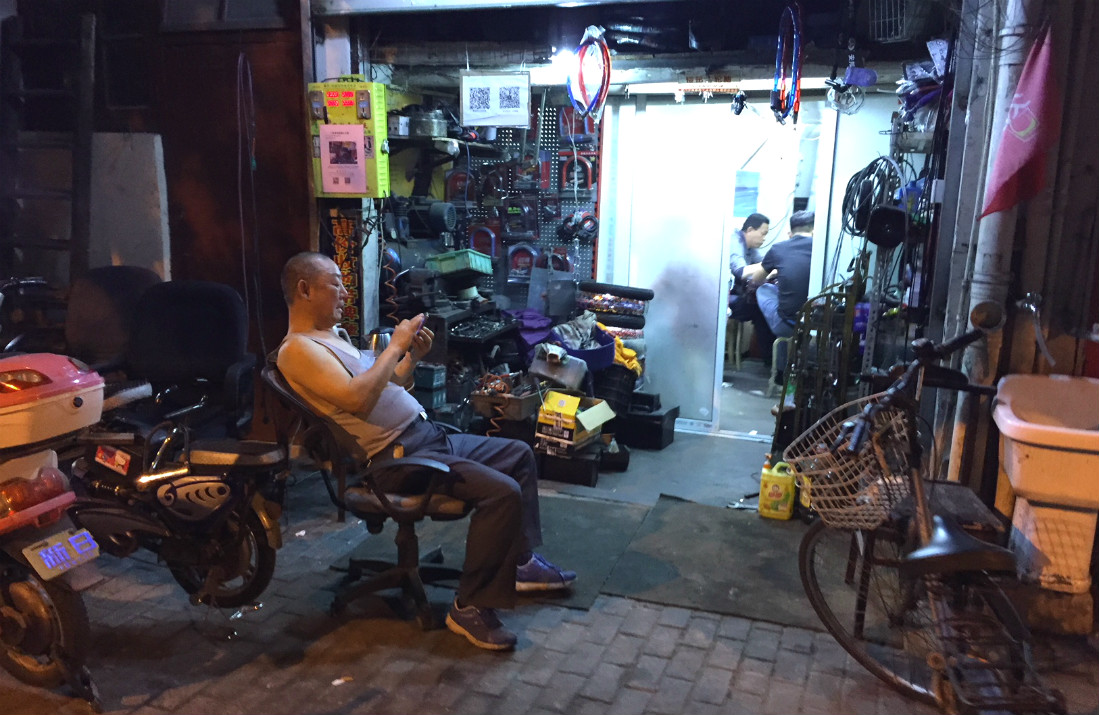
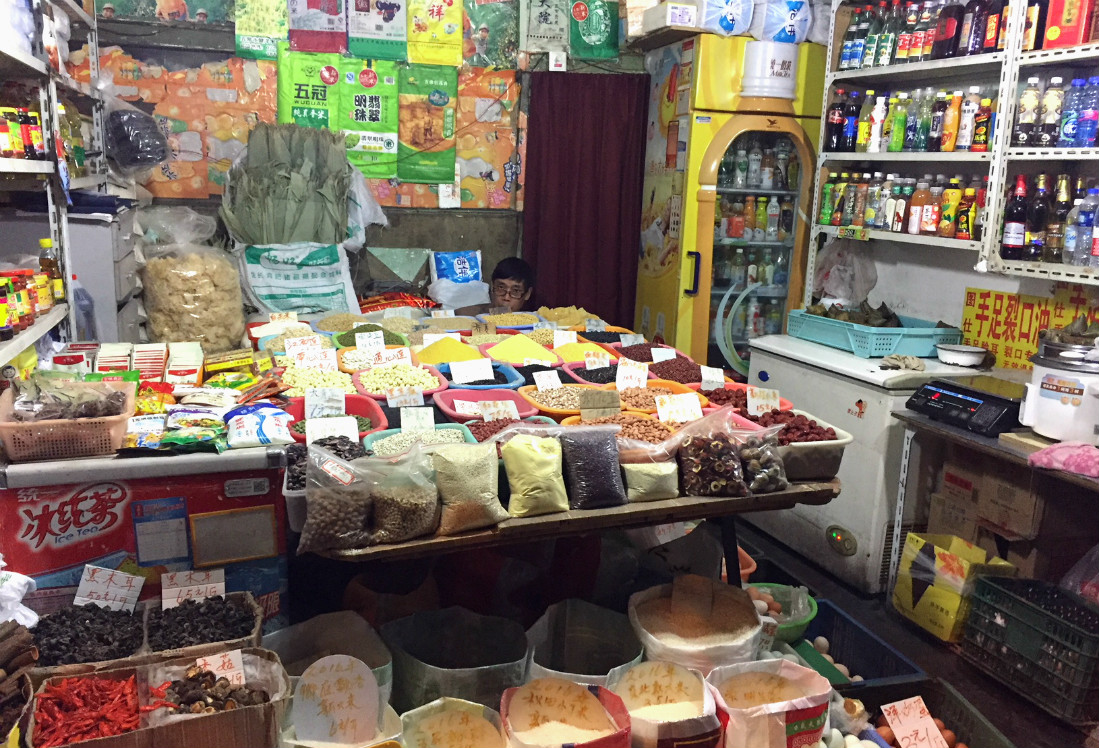

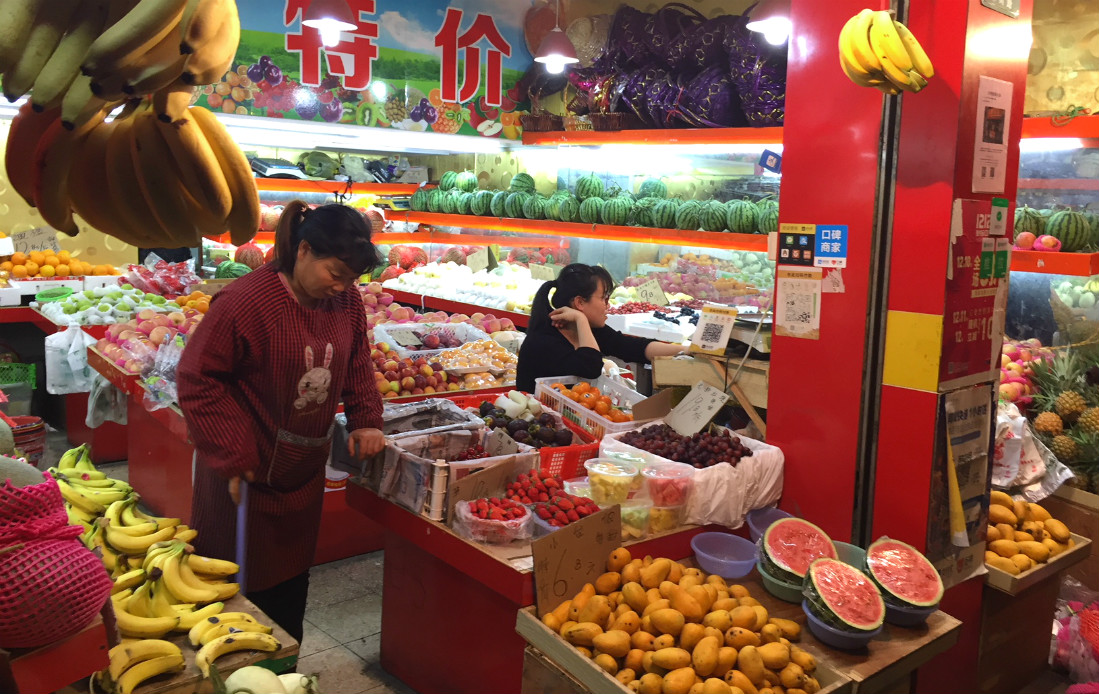
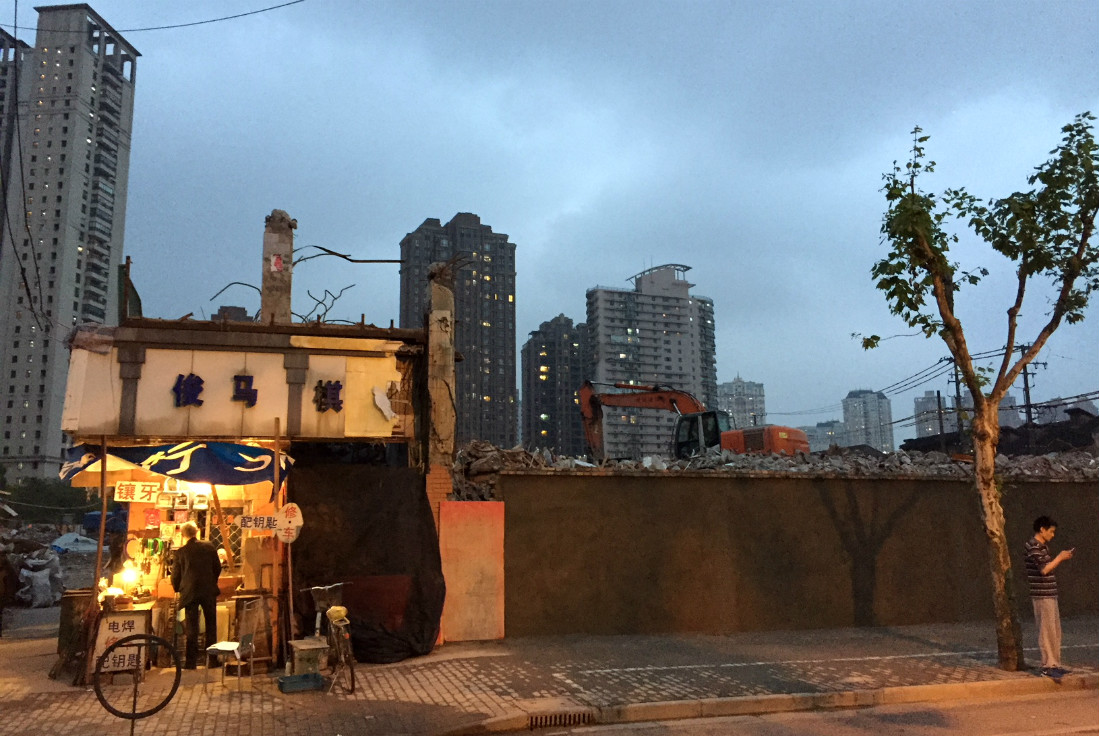
Maybe, but it’s a shame to see charismatic neighborhoods like this gutted and it’d be difficult to replace the Beer Nest’s clubby ambience. The Zhous are not so much owners as gracious hosts, warmly welcoming everybody who wanders in, and most people appear to be friends or regulars. Regulars pour their own pints on the honor system and pay when they leave—everything is ¥60 a pint, except for imports marked with golden chains around the tap—and Jackie installed a remote-controlled lock on the door so that he can give close friends access to the place when it’s not open.
Tier Two > Tier One
Zhou says that beer bars aren’t the future of craft beer in China, however. When I offhandedly note that I was surprised to see bottles from, again, two random American craft breweries (Left Hand Brewing’s Milk Stout and Bear Republic’s Racer 5 IPA) on the menu at Din Tai Fung of all places, Zhou explains that Din Tai Fung is exactly the type of cookie craft beer wants to crack.
“Chinese restaurants are the next target for everybody,” Zhou says. “Craft beer bars are very tiny, but the restaurants are a huge market. They all still sell industrially produced beer, so I spend a lot of time educating the owners. I tell them that we can give them specialty beer that tastes better than Budweiser.”
It’s not Shanghai and Beijing that are the future of craft, either, or maybe even the present. “The biggest markets are the second tier cities. In Shanghai, for example, people drink wine, whiskey, they can have VIP experiences. They have a lot of choice,” Zhou says. “But in the tier two and three cities, people don’t have that choice. If you want to know what the China craft beer industry is really like, go to the tier two cities like Wuhan, Guiyang, and Chengdu because they don’t have a lot of expats—only local Chinese people, and they drink craft beer with many local foods.”
Borrowing from the street food model, Zhou suggests an intriguing approach to accelerating craft beer adoption in huge cities like Chengdu (14 million+) and Wuhan (10 million+) that could simultaneously subvert Big Beer and spread the ethos of craft. In China as in the rest of Asia, most people don’t care whether a street food chef has been professionally trained or certified—they just care what’s in the bowl or on the plate… or, perhaps, what’s in the glass.
Zhou thinks this could work for brewers, too. All one would need is the ability to brew quality beer—even just one style—somewhere to brew it, and a means to store and serve it. Street beer brewers? “Brewers are artists; we think we are artists just like people who cook food,” says Zhou. “Think about what happens if we do something like this. We’d have 500,000 different beer recipes in China.”
###
Jackie’s Beer Nest is located at 76 Zhaozhou Lu in Old Town, a short walk from Laoximen Station on Lines 8 and 10. Open daily 5pm – 10pm. +86 21 138 1650 2260.
All photos (except for those cited) credited to Beer Travelist and cannot be reused or republished without permission.


